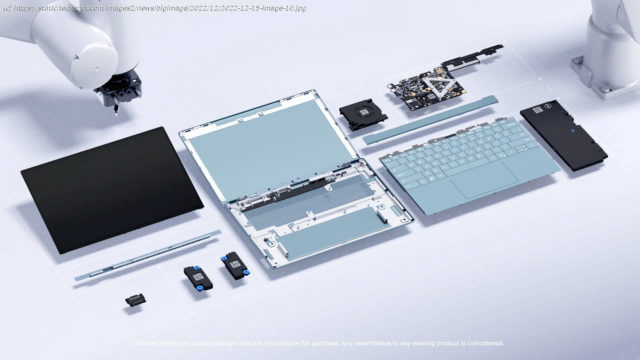Fast forward nearly a year after and Dell now has an upgraded Luna PC design that extends this concept to easy robotic manufacturing, component reusability, and potentially.
Forward-looking: When Dell first unveiled the Project Luna concept, the company garnered a great deal of attention for creating a vision centered around how devices like PCs could be upgraded, repaired, and recycled. The initial Luna concept focused on the modularity of the device, highlighting how key components could be organized into elements that essentially snapped together, creating an elegant notebook design that could easily be opened and accessed to do things like replace a motherboard or screen, perform upgrades, and more.
Fast forward nearly a year after and Dell now has an upgraded Luna PC design that extends this concept to easy robotic manufacturing, component reusability, and potentially even a new circular economy-like business model.
Luna 2.0 (not the official name, but a reasonable way to think about it) refines modularity further, simplifying things like the number of screws necessary to open the device and making disassembly easier. Not only is this simplified design an important step forward in repairability and device accessibility, but it also opens new opportunities for applications like manufacturing and remanufacturing the device.
To highlight this, at a recent press event in New York, Dell had a small robotic manufacturing machine on hand to demonstrate how easily a Luna PC could be assembled, disassembled, and/or upgraded.
This represents a great opportunity to speed up the manufacturing process and reduce costs at the same time—though it would require key component suppliers to get behind the modular standards that Dell is creating for Luna (which may not be as easy as it sounds).
At the same time, it also highlights how PCs—or at least certain elements of them—could have their lifetimes significantly extended.






